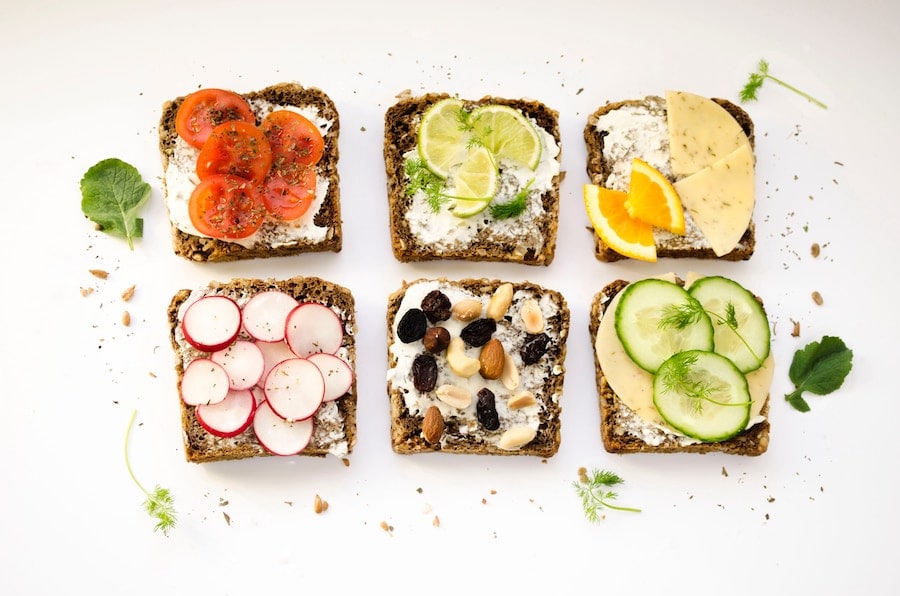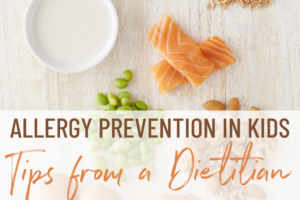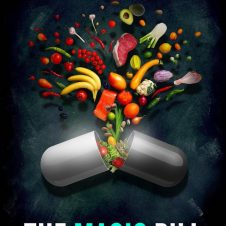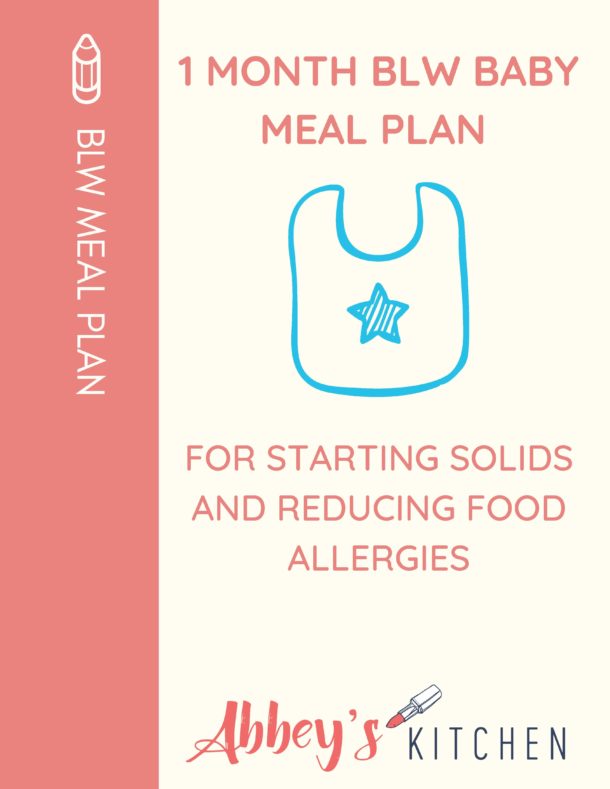I break down the common hypotheses related to food allergy prevalence and a number of allergy prevention tips.

According to the Center of Disease Control and Prevention, the prevalence of food allergies in children has increased by 50% between 1997 and 2011. That’s a pretty big spike. So if you’re like me, you’re probably wondering: WHY?
Let’s review some potential theories why allergies are on the rise, then we’ll discuss a number of allergy prevention tips.
Why Are Food Allergies in Kids on the Rise?
Hypothesis #1: Our Gut is Changing
We’re just beginning to understand the role of our gut in our overall health, but early research suggests it may play a role in our risk of allergies in kids. Multiple studies from Sweden and Denmark have found that reduced gut microbiota diversity in infants is associated with increased risk of allergic disease in childhood.
With the growing research in the area of gut health and allergies, we’ve discovered that events during pregnancy and delivery can all influence the microbiome. Let’s discuss their role.
Caesarean Delivery vs. Vaginal Delivery and Gut Health
The theory around baby delivery and incidence of allergies is still fairly new and widely misunderstood. A Norwegian Mother and Child Cohort Study found that children delivered by Caesarean section (C-section) had an increased risk of asthma at 36 months. Another study found that children delivered by C-section had a 52% increased risk of asthma compared to children born through vaginal delivery.
WHY?
Well I’ve actually written about this extensively here, but to summarize, research suggests that delivering vaginally is the ideal scenario for promoting a healthy microbiome because the infant gets exposed to the vaginal and yes – fecal (aka POOP) microbiota. Which basically means the poop your babe will get exposed to may add to the bacterial colonization of your babe, thereby strengthening their immune system and reducing their risk of developing allergies.
At the same time, we are just skimming the surface around this concept, and according to a recent 2017 study, the prevalence of allergies did not differ between C-section and vaginal delivery group. This was also found in another study which found that C-sections were not associated with the development of asthma, wheezing or atopy in later childhood.
Breastfeeding and Gut Health

Let’s talk about breast milk. Breast milk provides your babe with complete nutrition after birth and benefits both the mother and child in several ways. One of those benefits is potential allergy prevention for your child, which is pretty darn cool.
How, exactly?
It has been shown that breast milk can actually influence your infant’s microbiome by increasing the good bacteria in their gut, thereby strengthening their immune system. When comparing breast milk and formula, this study found that breastfed newborns carried a more stable and uniform population of gut bacteria compared to formula fed newborns. Another way it may influence allergies is through exposure. A 2018 study found that mothers who consumed peanuts while breastfeeding and introduced peanuts to their child within the first year of life was associated with the lowest risk of peanut allergy.
There are also studies that have found the opposite. A 2015 study found that exclusive breastfeeding did not affect a child’s sensitization to allergens within their first six years of life. Clearly we need more research in this area to make definitive conclusions about allergy prevention.
Diet and Gut Health
Let’s talk about diet because that plays a key role in our gut health. A diet rich in fibre can populate our gut with good bacteria, while a diet that lacks variety and vitamins and minerals may weaken our immune system and make us vulnerable to chronic diseases and even allergies.
Let’s talk about this in greater detail.
Prebiotics & Probiotics

About 70% of our immune system lies in our gut, so it makes sense that studies have shown that when we modify our gut environment, we can strengthen our immune system and reduce our risk of allergens. This is why pre and probiotic supplementation may be a helpful strategy to reduce an infant‘s risk of developing an allergy.
Prebiotics
Prebiotics are the food for the good bacteria. This 2017 study found that when prebiotics were added to infant formula, the gut microbiome was closely related to the gut microbiome of breast-fed infants. The study also found that the prebiotic mixture may benefit infants who are at a higher risk of allergy by significantly lowering their risk.
This is why we recommend kids get a wide range of fibre-rich foods since fibre is short-hand for prebiotics. One study found that a diet rich in whole grain and wheat bran (both very rich in fibre) are linked to an increase in the bacteria bifidobacteria and lactobacilli, while other carbohydrates, like resistant starches, appear to also increase the amount of ruminoccocus, E. Rectale and Roseburia. These may all sound Greek to you, but the bottom line is that the more fibre = the more yummy food to help the good bacteria grow!
Probiotics
Now probiotics are the good bacteria, themselves. One systematic review found that when probiotics were given to pregnant women, breastfeeding mothers or infants, the infant’s risk of eczema was significantly reduced. Having said that, the research is not so clear cut. One 2017 systematic review, concluded there is NOT ENOUGH evidence that supplementing probiotics in pregnant women, breastfeeding mothers and infants actually increased the infant’s chances of allergy prevention.
While we wait for the research to clarify the situation, I still believe strongly that a diet rich in prebiotics and probiotics is good for you and your little one’s health. You can get your probiotic fix through foods like yogurt, cultured milk, kimchi and sauerkraut, and through taking a probiotic supplement.
Non-Gut Friendly Foods
Now let’s talk about what kind of foods might not be so good for gut health.
Artificial Sweeteners
While artificial sweeteners are often used to cut back on sugar intake and caloric intake, some research suggests that they may alter our gut microbiome and may be linked to obesity and type 2 diabetes risk. It’s also important to note that this also depends on the individual. Some individuals may be more susceptible to changes to their gut microbiome, while some aren‘t. Clearly, this is still a topic that needs further understanding. Either way, I do not recommend using any artificial sweeteners in children’s meals, anyway.
Low Fibre Diet
Through extensive research we’ve learned that dietary fibre is an excellent source of energy for the good bacteria in our gut. So a diet low in fibre, specifically low in prebiotic fibres, has been shown to reduce the good bacteria in our gut. Skip the white bread and pastries, and load up on fibre rich foods like whole grain breads, pastas, fruits and vegetables.
Hypothesis #2: ANTIBIOTIC OVERUSE

The introduction of antibiotics in the 1950s saved thousands of people‘s lives and are sometimes an imperative medical intervention. However, some research (like this 2014 review) has suggested that excessive antibiotic use, particularly in early childhood, may increase the risk of allergies. The belief is that antibiotics alter our gut microbiota and limit its biodiversity, making it a target for allergic disease development.
This theory was tested in another more recent 2017 review which concluded that children exposed to antibiotics within their first two years of life had a statistically significant increased risk of eczema later in life compared to those without the exposure. Likewise, the risk of food allergy was higher in children exposed to antibiotics during the first year of life compared to those who were not exposed. I want to stress that the allergy prevention should not eclipse the need for life saving antibiotics, but it’s just worth being aware so you can discuss all of your options with your doctor.
Hypothesis #3: LACK OF VITAMIN D

Finally, let’s talk about Vitamin D. Vitamin D is an essential nutrient and plays a role in various bodily processes. This theory is based on the idea that children are spending less time outside and more time indoors compared to past generations, which is reducing their exposure to sunlight, and therefore, vitamin D.
One 2017 study found that low vitamin D levels may be slightly inversely associated with the risk of allergy rhinitis (also known as hay fever). Honestly, I’m not an expert in this field but this one is definitely less convincing. According to a new study on vitamin D, we may not need as much of the sunshine vitamin as we’ve been told in the past and supplementing with more may not be necessary or helpful. Also, once science discovered that vitamin D deficiencies caused serious health issues like rickets, we started to fortify as much food as we could. It doesn’t make that much logical sense to me that we didn‘t see such a high prevalence of allergies back when children were getting rickets from a lack of vitamin D. Having said all of that, this topic of allergy prevention is still a new area of study, so we’ll have to wait and see if it develops further.
Hypothesis #4: THE HYGIENE HYPOTHESIS

Before doing research on this topic, I was very familiar with the hygiene hypothesis for allergy prevention. The theory that over the years we’ve made our environment too clean, and we’ve kept our kids away from dirt, germs and other microbes. The thought follows that the lack of contact with microbes makes it harder for our bodies to fight off infections and allergies. The theory suggests that regular exposure to allergens early in life may help strengthen a child’s immune system against developing allergies, but because of our increasingly clean environment, we’ve weakened our immune system, thereby increasing the incidence of allergies.
So, the question remains. Does increasing our exposure to allergens protect us our harm us?
A study found that children from large families are at a lower risk of developing allergies because of the constant interaction with siblings carrying germs. On top of that, a study found that when young children are exposed to pets, specifically the microbiome of a pet, it increases the microbial diversity of the home protecting them, causing increased allergy prevention. However, that still doesn’t explain the rise in allergies, because pet ownership has increased significantly over the years so you would expect that would increase the protection against allergies.
Recently, the Hygiene Hypothesis has been challenged and proven that it has become less and less backed by actual science. In reality, microbiological studies have found that westernized homes that are being cleaned routinely don’t result in significantly lower levels of microbes in our homes. It is practically impossible to create a completely sterile environment, because as soon as we remove a microbe, they are soon replaced with more dust from air and shed from our body, our pets and our food. The truth of the matter is that the hygiene theory is just a theory, and so far no body of evidence has confidently made the link between a clean environment and allergy prevention.
Bottom Line On Allergy Prevention Tips
Tip #1 – Keep Your Gut Happy
A healthy diet means a healthy gut, and since we know our gut is largely responsible for immune response, it’s possible this may mitigate our risk and contribute to allergy prevention. So as much as possible, keep variety in your diet by including fruits and vegetables, whole grains, lean sources of protein and healthy fats. Include probiotic and prebiotic foods in your diet when you can (fibrous veggies, yogurt, kefir, kimchi and sauerkraut). And if you can and are able and interested, exclusively breastfeed for as long as you and your little one enjoy it.
Tip #2 – Talk About Antibiotics with Your Doctor
Speak to your doctor about all options when a course of antibiotics is recommended. Sometimes antibiotics isn’t the only answer and other treatment options are available, but working alongside your medical professional would be the only way to know.
Tip #3 – Get a Balanced Diet

Getting a wide variety of vitamins and minerals in our diet keeps our gut running smoothly. While it seems unclear if vitamin D is the definitive answer, we know that it is very important to overall health in general, so there’s a lot of value in ensuring you’re getting enough. If you’re breastfeeding, be sure to administer vitamin D drops, since breast milk doesn’t contain enough vitamin D.
TIP #4 – Exposure your kids to the great outdoors and animals

While the hygiene hypothesis doesn’t explain the rise in allergies, it does seem that there’s some value in exposing our little ones to something other than their tidy nursery.
So now that we have a grasp on some of the reasons why food allergies in kids are on the rise, in Part 2 we’re going to discuss some practical advice on how and when to introduce allergens to babies for allergy prevention.
Tell me, why do you think food allergies in kids are on the rise? Do you or do any of your family members suffer from food allergies?
Leave me a comment below with your thoughts on allergy prevention!
Contribution By:
Sofia Tsalamlal, RD, MHSc Nutrition Communication
MORE BLOG POSTS YOU MIGHT LIKE:
If you liked this blog post discussing allergy prevention tips, then you might also enjoy more blog posts on food allergies:
- How to Introduce Peanut Butter to Baby to Reduce the Risk of Peanut Allergy
- Sesame Peanut Noodles | BLW Allergen Introduction Recipe
- New Guidelines to Reduce the Risk of Peanut Allergy in Babies and Kids
- Should Babies Avoid Grains, Wheat and Cereals Before 12 Months?
- Chickpea Peanut Butter Biscuits | Iron Rich BLW Recipe
- Three Kid-Approved Allergy-Friendly Recipes | Tips to Prevent Food Allergy Reactions
Updated on May 12th, 2022

Abbey Sharp is a Registered Dietitian (RD), regulated by the Ontario College of Dietitians. She is a mom, YouTuber, Blogger, award winning cookbook author, media coach specializing in food and nutrition influencers, and a frequent contributor to national publications like Healthline and on national broadcast TV shows.





Julie @ Running in a Skirt says
Such good points! I was curious how to help the twins with this and I love how you broke down the actual facts.
Abbey Sharp says
Thanks Julie
Angela Cardamone @marathonsandmotivation.com says
This is such an informative post! I love how you break all the facts down and explain what is going on!
Abbey Sharp says
Thanks for reading Angela
jill conyers says
Great resource Abbey. Love reading about the science behind things.
Abbey Sharp says
So fascinating right!
Kelly says
So sad to see the rise of allergies. That’s an alarming rate but thanks for the tips to help with prevention.
Abbey Sharp says
Definitely. Very scary. Thanks Kelly
Deborah Brooks says
Thanks for breaking this all down in an easy to understand way. Helpful info!